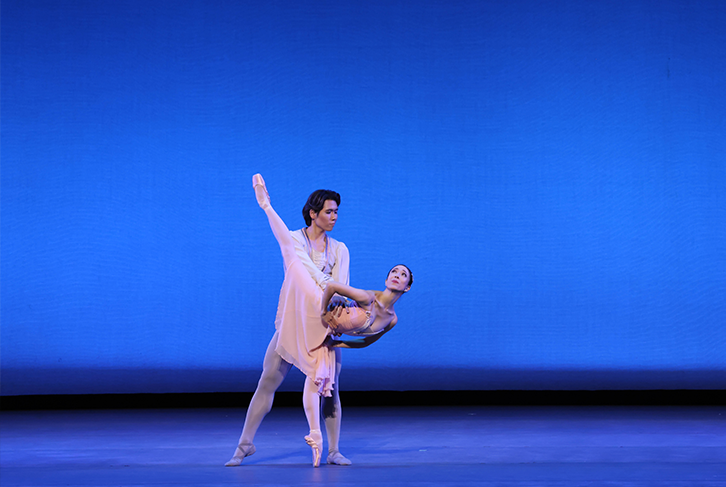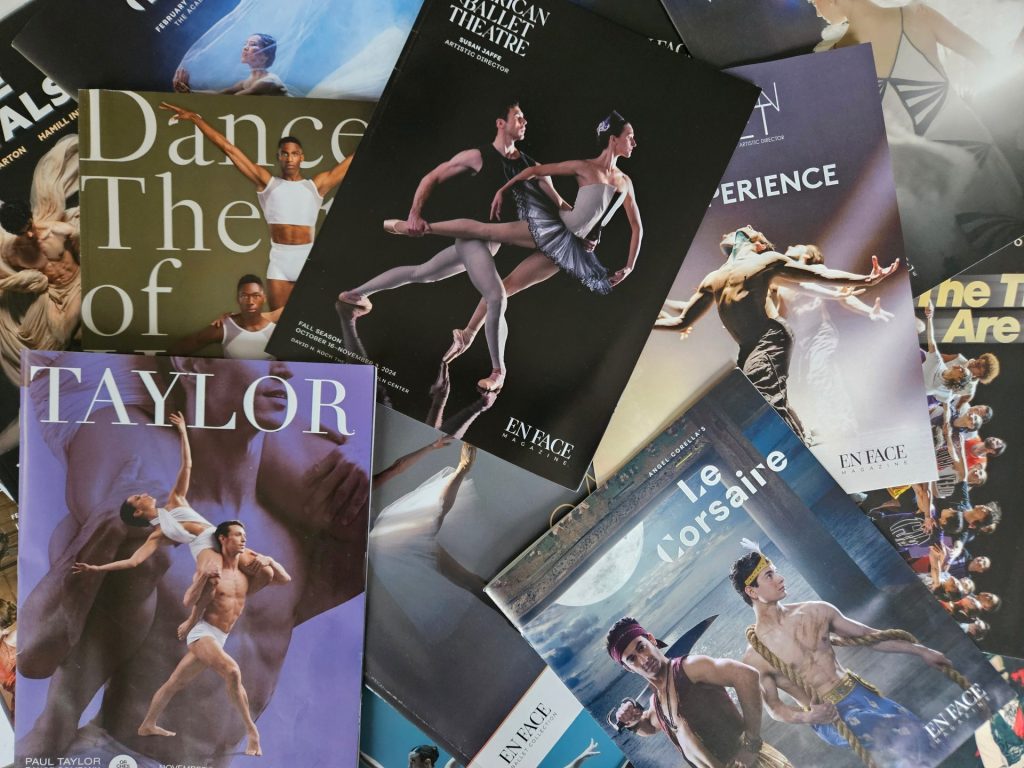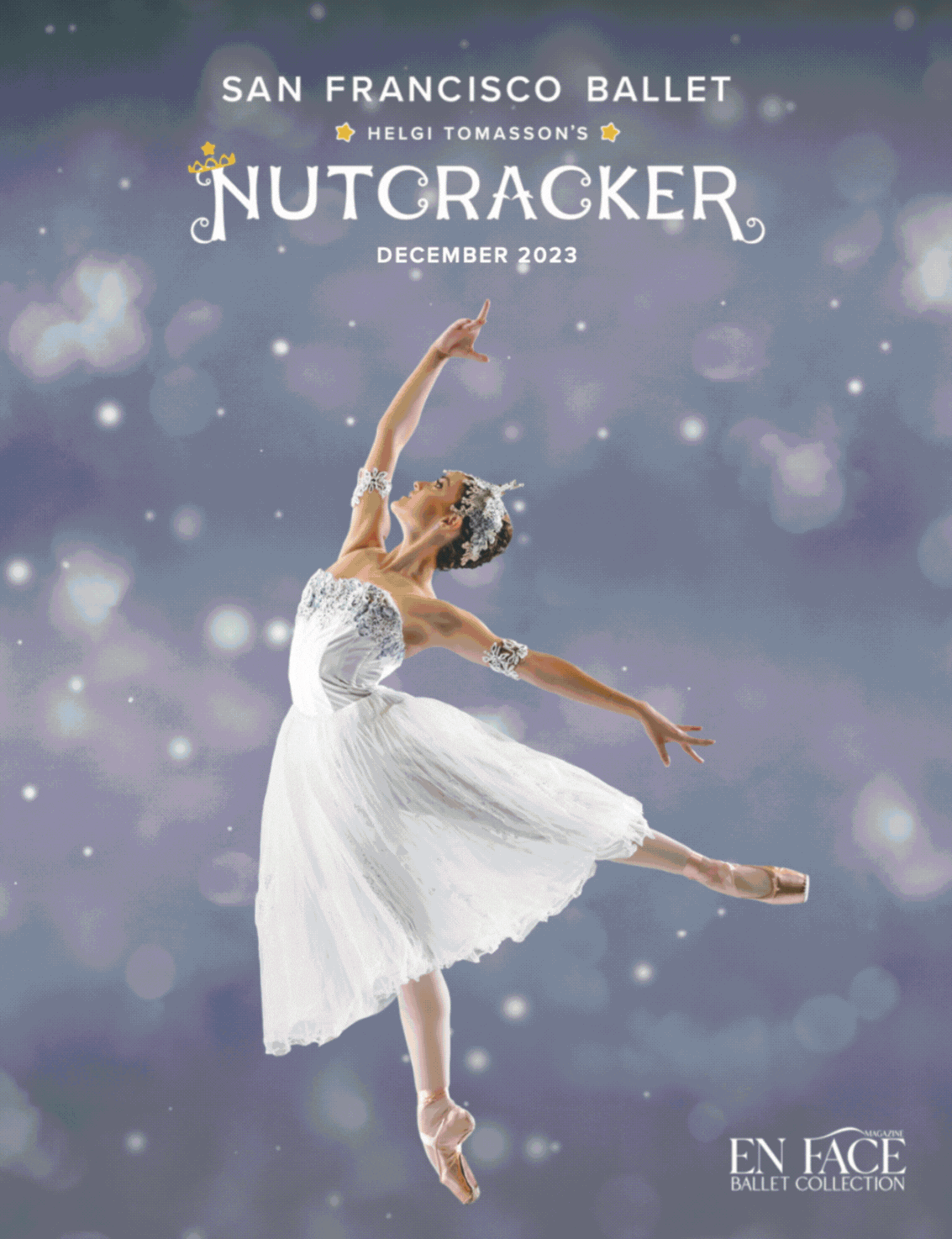Photo by xmbphotography.
When did you start dancing with TWB? And when did your role begin to shift into leading rehearsals?
Sona Kharatian: I started officially with The Washington Ballet in 2001. Prior to that, I trained with Kirov Academy and with The Washington School of Ballet, and I was hired by Mary Day to be an apprentice with The Washington Ballet. I then left to explore other opportunities and came back and rejoined the company officially in 2001. I started to help lead rehearsals last year.
Tamás Krizsa: I started dancing with The Washington Ballet in the 2007-2008 season. Started helping out with rehearsals as we were coming out of the pandemic and became fully involved with this season. It feels much longer than what it seems.
What are you most proud of from your time at TWB?
SK: I’m proud of all the work that I have put in throughout my years with the company. There’s not a specific time or specific year, but in every season I’ve spent here there were very special moments. Overall, it’s the work that I’ve put in and that’s what I’m most proud of.
TK: I am proud of all the work I have done but the most memorable are the ones where you get to have a stronger bond with the audience. I let this question be a quiz to those that know me and followed my career.
TWB is such an international and diverse company, including both of you. May you speak to how you find this diversity within your artistry and in the company itself?
SK: Thinking about the diversity overall in the company, I find that TWB in general seeks out young talent, and whatever nationality they are or where they are from, it’s the talent that TWB brings here to one place that makes it diverse. For me individually, it’s where I come from and my background. I grew up in Armenia with the Vaganova technique and then studied at Kirov Academy. My parents were also dancers. It’s a combination of those things that brought me to where I am and the diversity of my experiences.
TK: The company hosts so many nationalities, races, backgrounds, and beginnings. All of these dancers brought something here from their own culture, from their own life. This allows every dancer to learn something new from one another and approach every challenge with a different sight. I believe this makes a dancer much more versatile which is incredibly important in this profession.
What does it mean to be a Ballet Master with TWB?
SK: It is a big responsibility that I am very excited about! There are a lot of different aspects to this role, but overall, it’s helping to keep the level of the company high. I’m excited to share my knowledge, push it forward, and give it to the dancers.
TK: It is a lot of weight and responsibility but it is also very fulfilling. To see how a production is coming together and know you had a little part of it is always a little heartwarming. Being a ballet master with TWB means you are in constant connection with the artistic director as well as the dancers and all other members of the production and school. This connection gives a broader insight into the puzzle pieces that make TWB work every day which is a very humbling experience.
What is your day-to-day schedule like?
SK: If we are in the studio, we have class from 9:30am-11:00am. Sometimes I teach, sometimes Tamas teaches, sometimes Julie teaches, and we have some guest teachers; it all depends on the week. Then from 11:15am to 2:15pm we have a three-hour block, and both Tamas and I are in the studio working on whatever the schedule requires, depending on what the program is. Then, we have a lunch break from 2:15pm to 3:15pm. We end the day from 3:15pm to 6:15pm with another three-hour block of rehearsals with the dancers. So basically, we are in the studio all day!
TK: My day always starts the night before, I look through the schedule and imagine every rehearsal: what is the goal we want to achieve and what is the best approach. I wake up and either teach a class which I prepared the night before or just head in straight for rehearsals. Throughout the day I try to have an eye in every rehearsal, even the ones I am not involved with just to know where each piece is currently standing. This helps me to create a schedule. In lunch break, I mostly either work on the schedule or try to respond to emails. After lunch, we are back rehearsing until 6:15. As soon as I get home I usually look through the emails again and try to respond to any that is new or couldn’t get to and work on building the following week’s schedule. This is a very in a nutshell version. One of the perks is that no 2 weeks is the same, no 2 days is the same. There is always something new coming in our way.
What skills as a dancer also translate to your current role with TWB?
SK: My experiences with different choreographers, ballets, and roles that I have done; I find the knowledge from those things comes in handy in whatever I am coaching now.
TK: Some of the biggest ones are definitely work ethic and a constant striving for perfection. I think these two helped me to not just want to do the job but want to do the best job I possibly can.
What is the most satisfying part of your work?
SK: The most satisfying part is seeing the dancer’s growth and seeing them step up to their potential. It’s great to see my influences in the transformation of the work from the studio to the stage.
TK: I think it is incredibly satisfying to see someone grow, see their success and know you had something to offer. For me, it’s so fulfilling to experience the trust dancers put in you and see them grow because of it. Fulfilling, and satisfying are not good enough words for this. When all their hard work, day in and day out gets paid off on stage is something that I am so lucky I can experience because it’s hard to describe the feelings with words.
What are you most looking forward to for the rest of the season, and beyond?
SK: For this season, I’m most excited about our next programs, including The Sleeping Beauty. Beyond there, I’m looking forward to continuing to push with enthusiasm and excitement to keep TWB alive and moving forward!
TK: I am very excited about our Balanchine program. It is such a good mixed repertoire that has a little something for everyone. On top of all this, it is a lot of dancing with beautiful live music. I have not had much time to look beyond the season just yet, ask me in a few months. 🙂
This article was first published in the Balanchine! playbill. It is published here courtesy of The Washington Ballet. Click here to learn more or read the entire playbill. All photos by xmbphotography.









